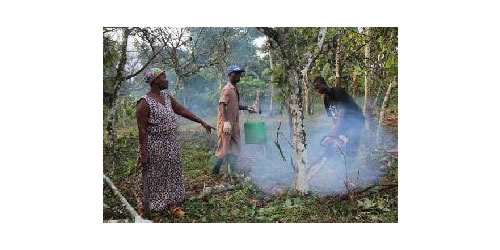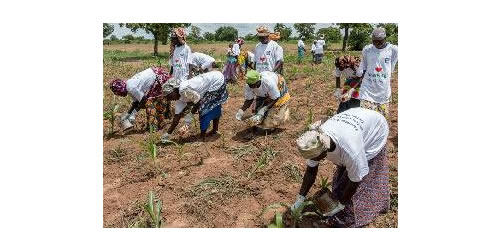Agric employs less than 2% of non-household workforce – GSS

A new survey conducted by the Ghana Statistical Service (GSS) has revealed that the sector is the smallest employer of the non-household (business engaged in commercial activities) establishments in the country.
Dubbed “National Employment Report,” the survey forms part of the Integrated Business Establishment Survey (IBES) Phase I that focused on the listing of all non-household establishments with the primary aim of producing a business register and providing reliable, timely and relevant economic statistics to support the formulation of policies that can help stimulate growth in all sectors of the economy.
According to the report, of the 3,383,206 persons engaged by all non-household establishments in the country—both formal and informal, the agricultural sector engages the least number of persons (59,813), representing 1.8 percent of the total workforce in the country.
The report further indicates that the Greater Accra region engaged over 19,700 people in the sector, making it the highest recorded in any of the ten regions, whilst the Upper East engaged the least number of only 380 people in agricultural activities.
Recent data compiled by the World Bank Group, about 21 percent of the Ghanaian population has moved out of agriculture to other more productive economic sectors over an 18-year period of between 1992 and 2010.
The World Bank report is supported by the GSS survey which shows that the services sector engages over 2.7 million people which represents 80.1 percent of the workforce and trailed by the industry sector with 614,517, representing 18.2 percent.
Agricultural contribution to the economy has been dwindling over the years. In 1992 the share of agriculture to GDP was 23.6 percent growing to about 41 percent in 1995. But the Ghana Statistical Service reports that the contribution of agriculture to GDP declined from 29.8 percent in 2010 to 22 percent at the end of last year.
The agricultural sector, compared to the services and industrial sectors also engages more males than females in its activities. The sector engages over 74 percent of males, followed by the industry sector which engages more than 64 percent, whereas the services sector recorded the least with over 59 percent.
Additionally, out of the 2,651,099 persons engaged, skilled workers constitute 78.4 percent, with the remaining 21.6 percent being unskilled workers. The share of the skilled workforce is the highest in the services sector with 79.9 percent, followed by agriculture 78.7 percent and industry 71.7 percent, the study shows.
The survey was conducted for establishments that commenced business in the period of 2005-2014.
Source: B&FT





